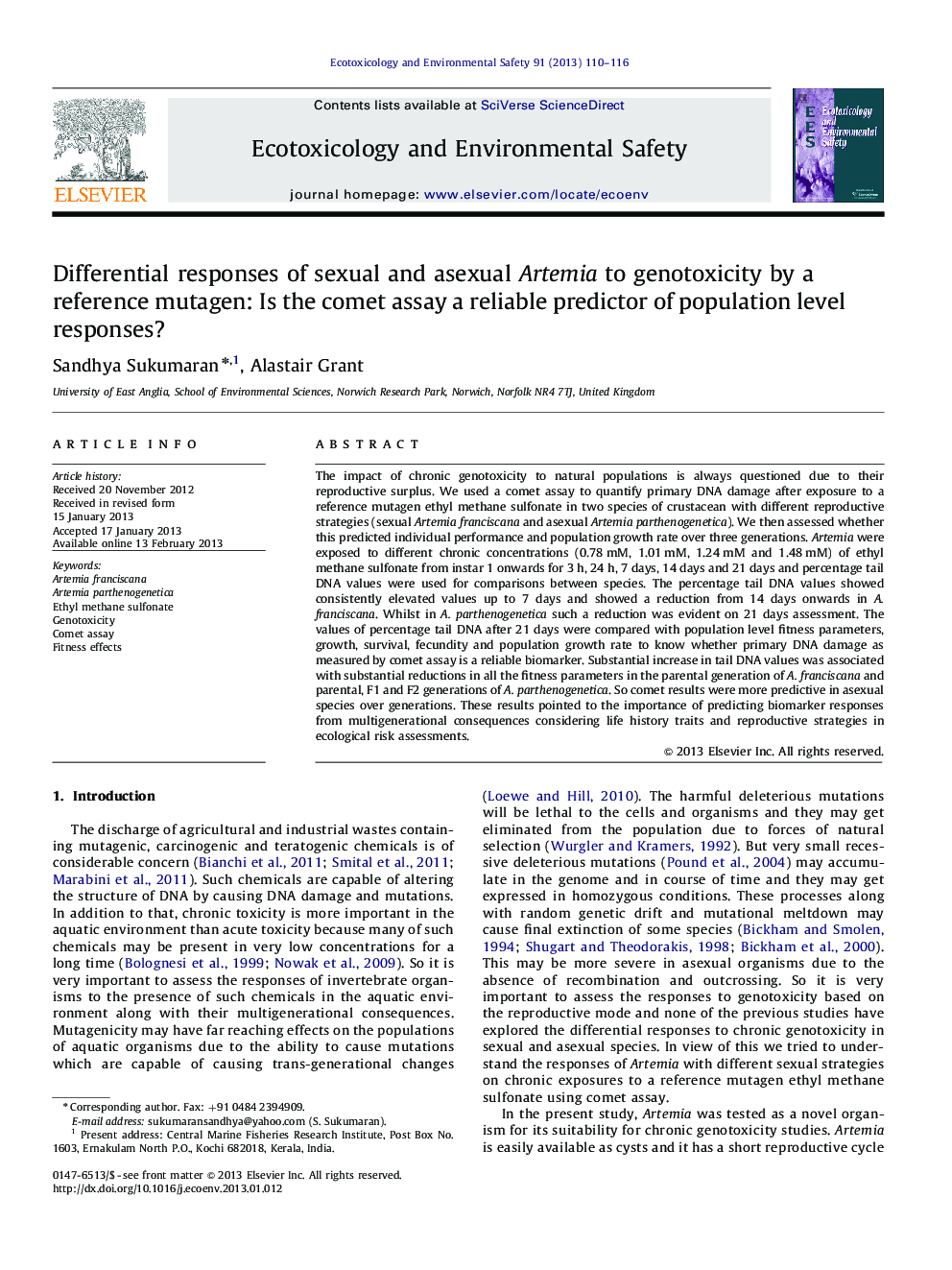| Article ID | Journal | Published Year | Pages | File Type |
|---|---|---|---|---|
| 4420520 | Ecotoxicology and Environmental Safety | 2013 | 7 Pages |
The impact of chronic genotoxicity to natural populations is always questioned due to their reproductive surplus. We used a comet assay to quantify primary DNA damage after exposure to a reference mutagen ethyl methane sulfonate in two species of crustacean with different reproductive strategies (sexual Artemia franciscana and asexual Artemia parthenogenetica). We then assessed whether this predicted individual performance and population growth rate over three generations. Artemia were exposed to different chronic concentrations (0.78 mM, 1.01 mM, 1.24 mM and 1.48 mM) of ethyl methane sulfonate from instar 1 onwards for 3 h, 24 h, 7 days, 14 days and 21 days and percentage tail DNA values were used for comparisons between species. The percentage tail DNA values showed consistently elevated values up to 7 days and showed a reduction from 14 days onwards in A. franciscana. Whilst in A. parthenogenetica such a reduction was evident on 21 days assessment. The values of percentage tail DNA after 21 days were compared with population level fitness parameters, growth, survival, fecundity and population growth rate to know whether primary DNA damage as measured by comet assay is a reliable biomarker. Substantial increase in tail DNA values was associated with substantial reductions in all the fitness parameters in the parental generation of A. franciscana and parental, F1 and F2 generations of A. parthenogenetica. So comet results were more predictive in asexual species over generations. These results pointed to the importance of predicting biomarker responses from multigenerational consequences considering life history traits and reproductive strategies in ecological risk assessments.
► We assessed responses of sexual and asexual Artemia to genotoxicity by a mutagen. ► We performed comet assay after exposing the parent generation to EMS. ► Fitness parameters were assessed in parental, F1 and F2 generations. ► A. parthenogenetica was slightly more sensitive to EMS than A. franciscana. ► DNA damage was associated strongly with fitness reductions in asexual species.
